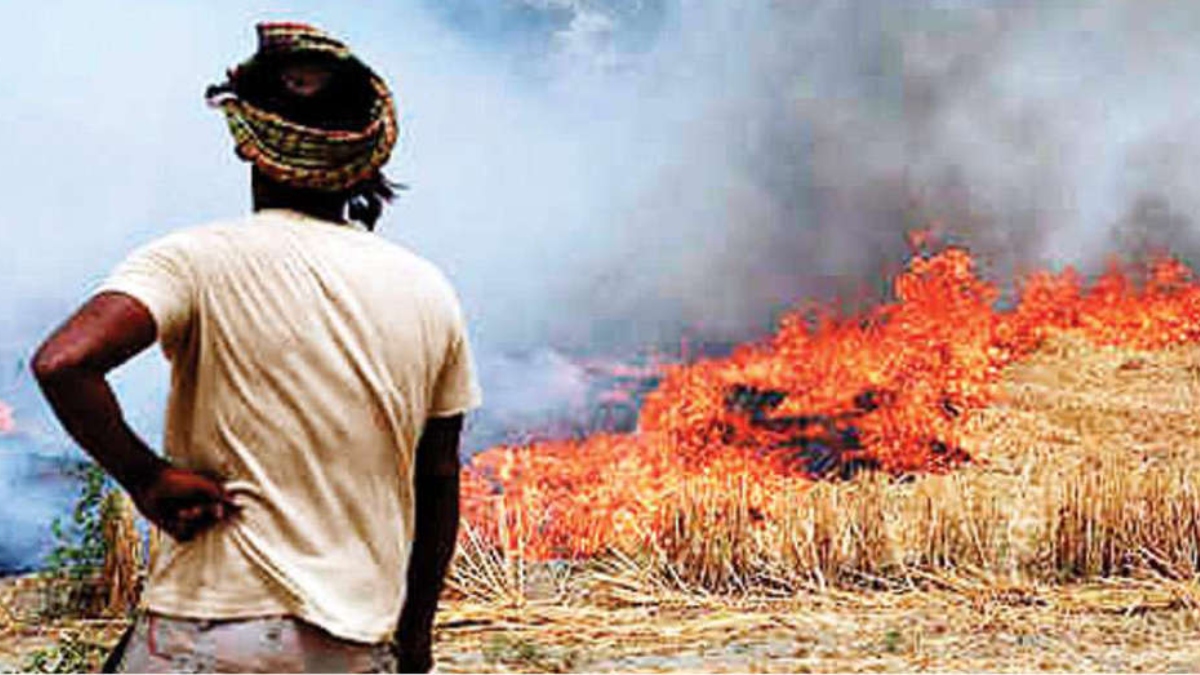Stubble burning is a practice of managing residues left after harvesting of rice crop by setting the straw stubble on fire. Along with the industrial and vehicular emmisions, it often leads to the deterioration of air quality (detected in terms of Air Quality Index), particularly in Delhi and NCR. In fact, it has been cited as the major cause of air pollution in Delhi since 1980.
This year, there have been 17,864 incidents of stubble burning in Punjab, 2,083 in Haryana, 777 in Uttar Pradesh, 345 in Rajasthan, and 972 in Madhya Pradesh between September 15 and November 1, according to the satellite data assessed by Indian Agricultural Research Institute. Consequently the level of air pollution has been increased in these states as well as Delhi (as air currents lead to the dispersion of pollutants in the capital), which led to a series of opinionated talks, proposals, debates, political accuses, and clashes between centre and state governing bodies.
Every year the story of stubble burning rules the media during early-winter period. Many environmentalists have raised their concerns on the matter and the government has also passed suitable legislations to control stubble burning. So why it is that farmers won’t listen to the environtentalists and agricultural officials despite such hue and cry all around? If one thinks that the farmers are not aware of the health issues related with stubble burning then it is not the case. If one thinks that the farmers are not ready to abandon their cultural cultivation practices, then it is important to know that stubble burning actually begins with the introduction of modern agronomic practices and mechanised farming. Traditionally, crop harvesting was done manually, which used to leave small amount of residues that can be easily managed while ploughing the fields.
The one and only reason of continuation of stubble burning process is “the lack of options” or should I say “the lack of practical, economic, and eco-friendly options”. Yes, a number of suggestions are often put forward by so-called environmentalists and subject matter experts. Some state that farmers should opt for bio-decomposing process, whereas others recommend using machanized equipments such as balers or superseeders. It is often easier said than done. Most of these suggestion-makers have actually never experienced or even realized the pragmatic meaning of farming spread across several acres to understand the feasibility of these options. And most of them do not acknowledge the question that who should be responsible for bearing expenses of these processes.
If someone is genuinely interested in working at the root causes of the problem, then rather than clinging to one’s beliefs, the person should first interact with the farmers and that too, not with an agenda of lecturing them but for understanding their mindset. The most common counter-response that you will get is that they have larger and better issues that need more shoutout than the issue of stubble burning. Farmers are barely making profits via current agricultural practices as the investement nearly equates or sometimes even exceeds the income (it is actually common in case of insect pest attacks or extreme weather events). The current agricultural system does not even guarantee a minimum selling price, which leads to the exploitation of farmers. The harvest is mostly purchased at lower prices (than it should be) and the payments are often delayed. Their debts are continuously increasing, which is consequently leading to suicides among farmers. They often raise their demands in this context but most of the time their issues are strategically ignored by the media, government, stakeholders and self-absorbed societies. On one hand, political apathy towards their demands agitates them, and on the other it is being expected of them that they should take the entire responsibility of environmental pollution on their shoulders (a large portion of which is actually contributed via a number of unregularised sources throughout the year, industries and vehicles being at top of the list).
The matter of stubble burning can never be resolved by playing political blame-games, issuing penalties and forcing farmers to opt for other ways. Though farmers are the first one’s to witness harmful impacts of deteriorated air quality due by stubble burning but since they are already burdened by financial losses, they could not be convinced otherwise. Rather than providing unnecessary media attention, futile awareneness lectures, and impractical solutions to the problem, government or private contractors either needs to intervene and take the responsibility of stubble management on their own (without expecting any time and investment from the farmers) or provide farmers with appropriate, timely, and financially-benefitting resources for the same. It is high time to show ‘save the environment’ spirit projected by environmentalists, government and public in actions instead of speeches, screams, and sobs.
Harminder Pal Singh is a
Professor, Environment Science Department of Panjab University, Chandigarh







